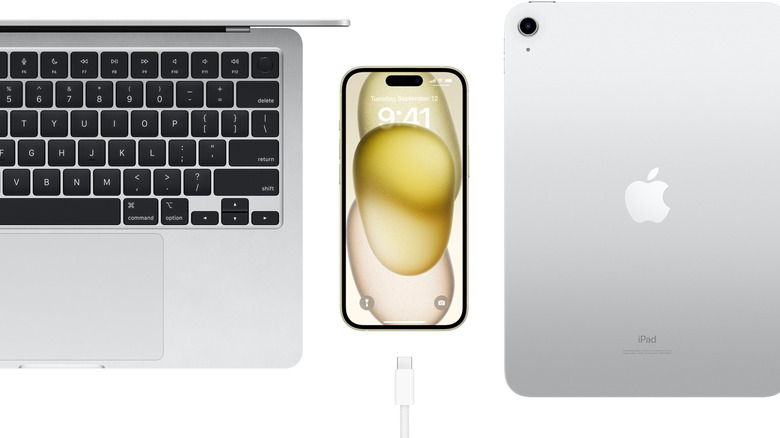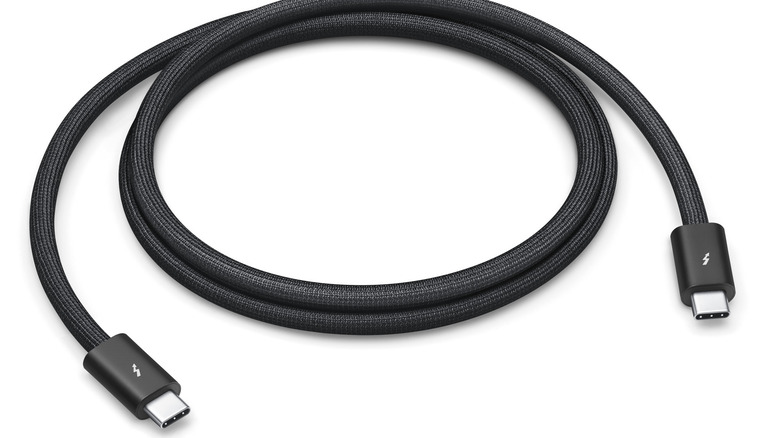Charging Your New iPhone With The Wrong Cable Might Slow Down Your WiFi: Here's Why
There are a lot of factors that can affect the way an iPhone (or any smartphone, really) performs in various aspects, and the iPhone 15 is no exception. It's not because of bugs or glitches, or the result of a hardware failure, but due to certain connected accessories.
In fact, Apple itself has stated that users may begin to notice reduced wireless speeds — over Wi-Fi, cellular data, or both — because of a non-compliant USB-C connection. Meaning if you physically plug your iPhone 15 into a USB-C connected accessory or a USB-C cable that doesn't follow industry standards, you could run into problems.
It may seem illogical since USB-C cables are used to directly transfer data between devices while wireless connections are a different form of data transference entirely, but the reason for this issue is simple: Interference. More obvious obstructions like physical barriers or a bogged-down network can certainly do their part to slow down your wireless connections, but even electrical interference has been known to have a similar effect.
Dealing with (or avoiding) USB-C signal interference
If you suspect or expect a dodgy USB-C cable is slowing down your iPhone 15's wireless speeds, there are a few simple steps you can take:
- Avoid the issue outright by sticking with the cable that was included with the iPhone 15.
- When applicable, avoid using the wireless connection on your iPhone 15 while it's connected. For example, don't use it to check your email while it's charging.
- Disconnect the iPhone 15 from the cable, after which the wireless connection should go back to more typical speeds.
- Try switching to a different USB-C cable if one is available, as it may be more in line with current standards and not have a noticeable impact on wireless speeds.
- If you have to use a different USB-C cable, avoid the low-budget ones that are often sold near checkout counters. You usually get what you pay for, and that can result in all sorts of problems from interference to actual fires.
- Look for the telltale signs of cable compliance like no visible seam on the plug, USB-IF certification noted on the packaging, or sticking with brands you already know and trust.
- Search for a cable's TID on USB.org to see if it's been certified.
But if all else fails, sticking with official Apple accessories and cables should result in the least amount of friction. Apple recommends using a Thunderbolt 4 (USB-C) Pro cable for both high transfer speeds and minimal interference.

